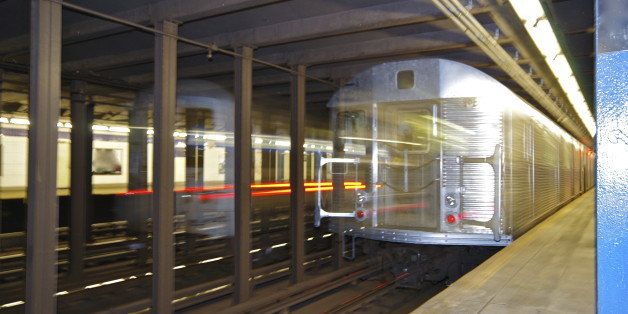
The extraordinary public transit system operated by the Metropolitan Transportation Authority (MTA) is the lifeblood of New York's 24-hour-a-day economy. Funding the next MTA capital plan -- for 2015-2019 -- should be a high priority for state officials. But the spending priorities of the MTA's proposed capital plan, which calls for $32 billion in public investments over the next five years, are misplaced and should be the focus of greater public discussion as the plan evolves.
The plan identifies $16.9 billion in available funding, but a gap of about $15.2 billion remains unfunded. How to fill that gap, and perhaps find even more for worthwhile investments, should continue to be a topic of public discourse.
Too little attention, however, has focused on how the MTA intends to spend the money. The Citizens Budget Commission, of which I am President, released on October 23rd a study that analyzes how the capital plan funds would be spent. The study -- titled "Misplaced Priorities in the MTA's Capital Plan" -- is timed to inform the public discussion of the capital plan, before it is approved by the State's Capital Program Review Board. The CBC recommends that the proposed plan be revised to address three serious shortcomings.
First, the capital plan does not make sufficient progress in bringing aged infrastructure to a state of good repair. Although the MTA has been making substantial investments in its assets for more than 30 years, most of the facilities are not in a state of good repair. At New York City Transit, for instance, only 2 of 14 categories of assets -- subway cars and mainline track and switches - are currently rated 100 percent. The commuter railroads, Metro-North Railroad and the Long Island Rail Road, also have major components falling short of a state of good repair. The proposed plan will leave many features of these systems, such as stations and less visible power stations and pumps, in need of repairs and renovations; the consequence will be less reliable and less safe service than the public needs.
Second, the proposed plan does not make sufficient progress in modernizing the signal and communication systems in the subways. A long-standing goal of the capital program has been to install Communications-Based Train Control (CBTC), a system that improves safety, permits greater capacity by reducing the time between trains, and promotes efficiency by requiring fewer operators on the trains. The schedule for adopting CBTC, currently available on the L line and being installed on the 7 line, is too slow; in the next five years work will begin on only two additional segments, leaving the vast majority of the system with outdated components for at least the next 20 years.
Third, the proposed plan allocates substantial sums, and implicitly commits even larger sums in the future, to projects to expand the transit network without sufficient planning or management capacity for implementation. Fully $5.5 billion of the planned $32 billion is for expansion projects. About $2.6 billion of this is for cost overruns related to completing the East Side Access project bringing the Long Island Rail Road into Grand Central Terminal; the remainder is to start two new projects whose total costs have not been specified -- extending the not-yet-opened Second Avenue Subway from 96th Street to 125th Street and building three new stations in the Bronx on the Metro-North Railroad and bringing that line into Pennsylvania Station.
Those may be worthwhile projects, but MTA leaders have not made their case for why they are being initiated ahead of other projects such as a new station at Tenth Avenue on the extended Flushing Line, extension of that line to Secaucus, or extension of the Second Avenue Subway south toward downtown. Given the multiple possibilities for beneficial expansion of the transit system, explicit criteria should be established to select priority projects and evidence should be considered about how well a range of potential investments meet these criteria. Better planning and greater transparency should precede investments in new system expansions.
The MTA capital plan will be a major public expense, and those funds should be wisely spent. Bringing the current system to a state of good repair and introducing new and safer technology should be higher priorities than expanding the system. How we expand the system should also be subject to more thorough planning and to improvements in the MTA's ability to complete large-scale projects on time and on budget.
Now is the time to discuss these priorities, before $32 billion or more in taxpayers' money is spent on them.
The author is President of the Citizens Budget Commission.
